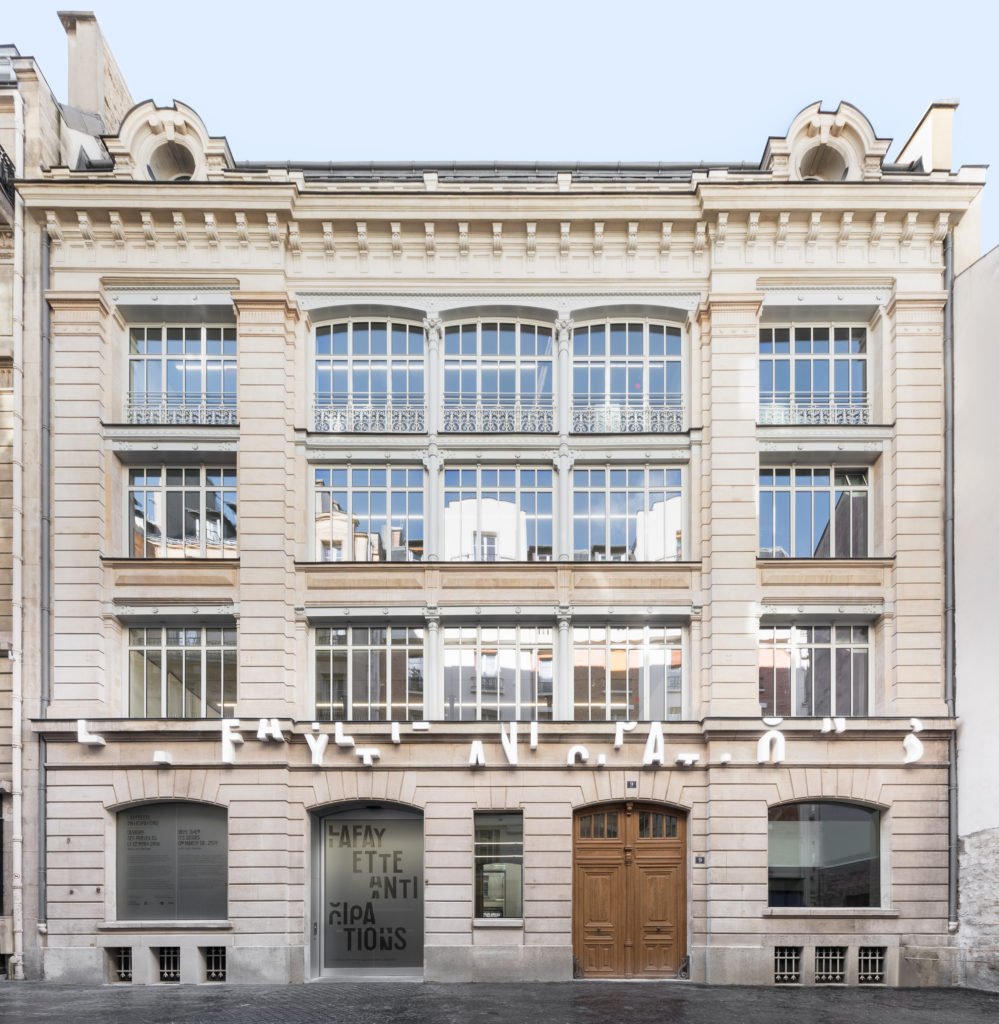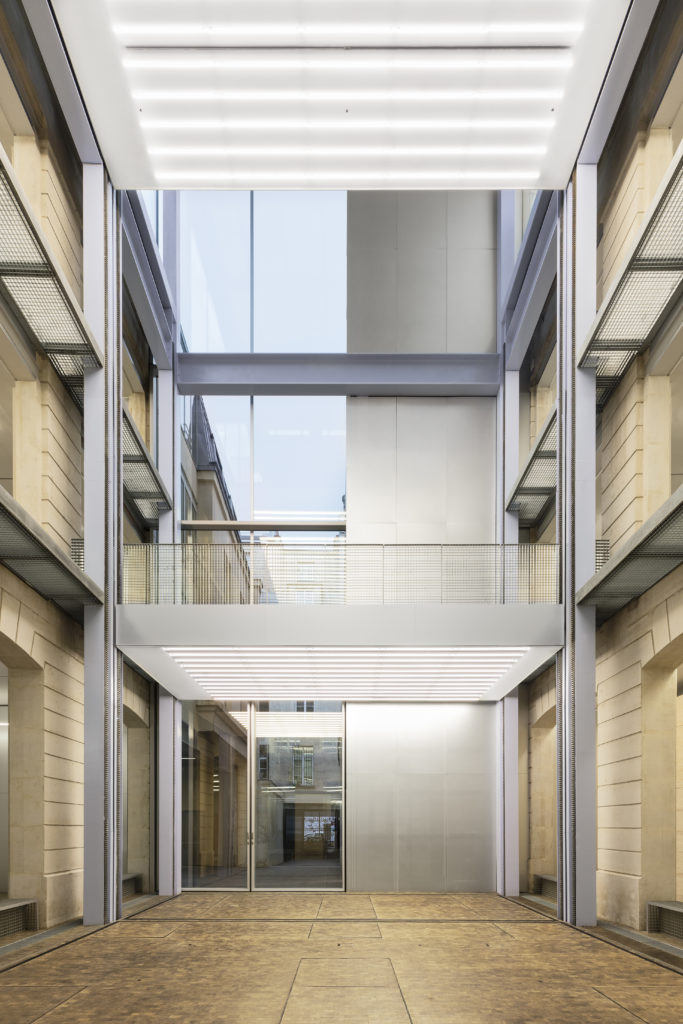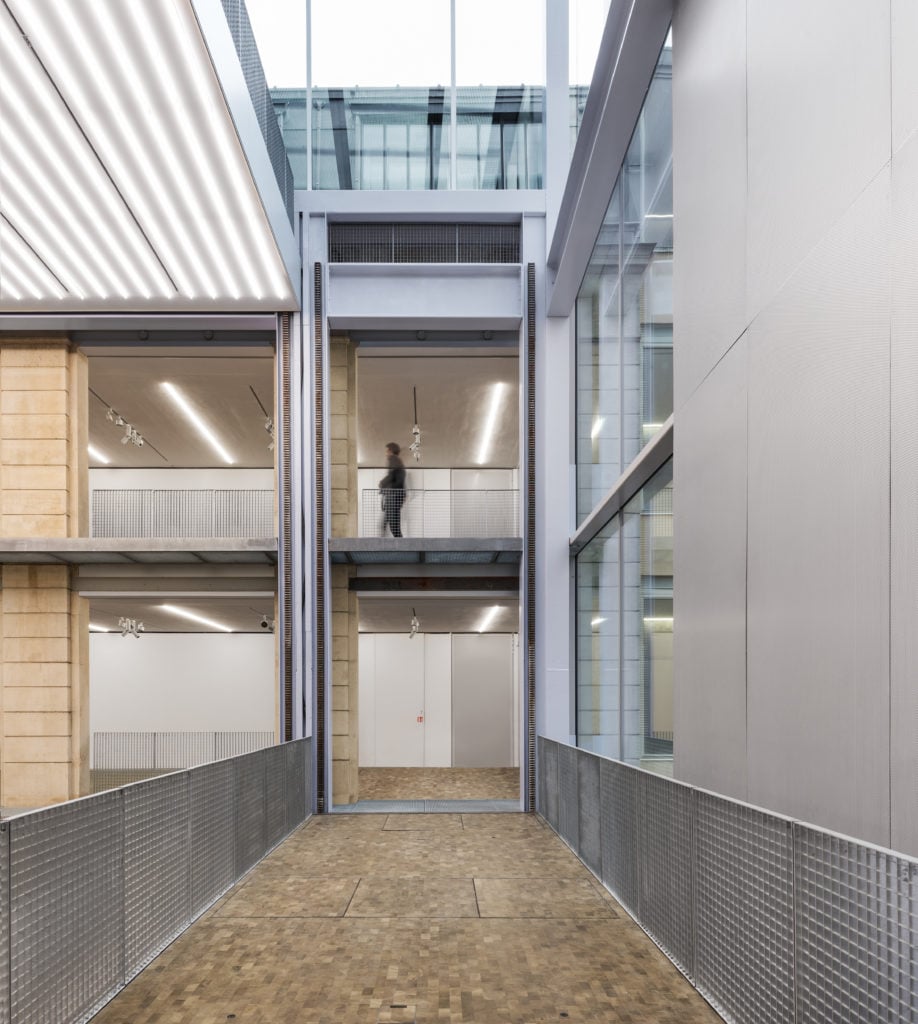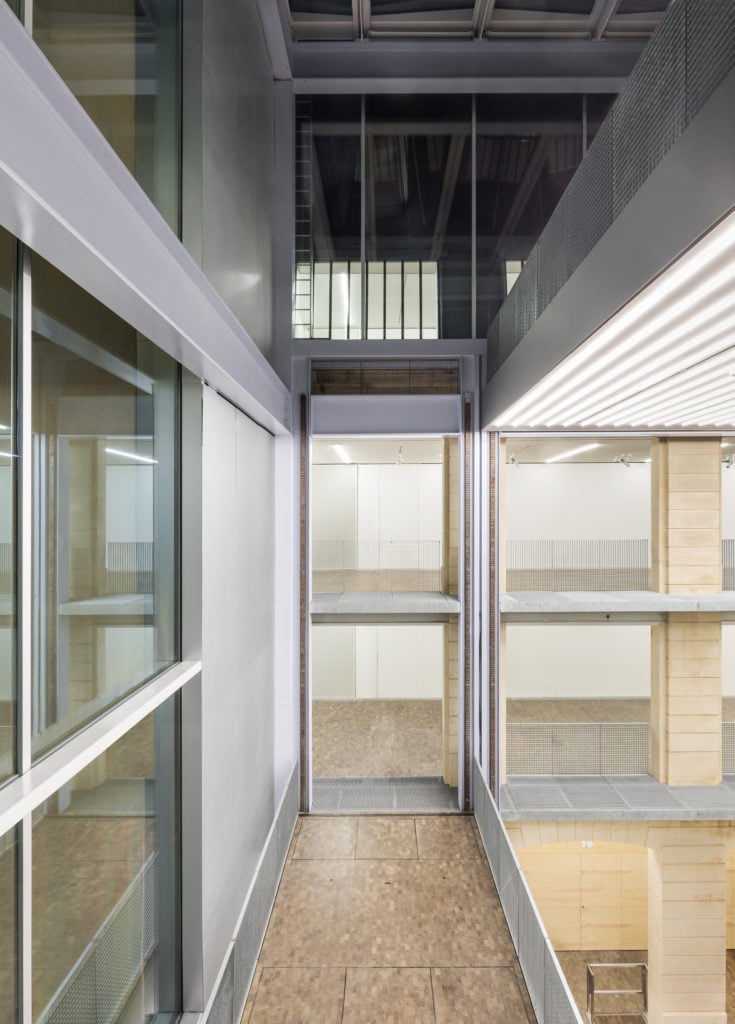Art World
A New Rem Koolhaas-Designed Art Center in Paris Aims to Supercharge the City With Maximum Creativity
Lafayette Anticipations will feature new works made by artists, performers, and fashion designers working in high-tech spaces.

Lafayette Anticipations will feature new works made by artists, performers, and fashion designers working in high-tech spaces.

Naomi Rea

Lafayette Anticipations, which opens this week, aims to present something new and different in Paris all of the time. Housed in an industrial building retrofitted by Rem Koolhaas in the historic Marais district, the spaces are hyper flexible and the emphasis is on maximum creativity. Artists, fashion designers, and performers will work under one roof and only new creations will be on show.
Conceived in 2013, and headed by the Galeries Lafayette foundation and the Moulin Family endowment fund, Lafayette Anticipations describes itself as France’s first multidisciplinary center, supporting contemporary creation across disciplines, ranging from art to design to fashion. The new institution is backed by the owners of the high-end French department store, Galeries Lafayette.
The foundation’s managing director, François Quintin, told artnet News that the name, “Lafayette Anticipations,” started as a joke. Launched five years ago, the foundation has been commissioning work without exhibiting it. (The pre-launch program included artist residencies and collaborations with institutions such as the Centre Pompidou, the Kunsthalle Basel, New York’s MoMA PS1, and Performa.) “When we realized that Paris, and everybody else, was talking about the opening of the foundation, we decided to call it ‘Lafayette Anticipation,’ in a play on the departments in Galeries Lafayette, such as Lafayette Gourmet, Lafayette Homme, Lafayette Femme, and so on, the joke being that it’s as though there is an ‘Anticipation’ department in the store.”
The plural, “Anticipations,” is meant to cover the broad scope of expectations in the pipeline—from the anticipation of what new work could be created next, to the foundation’s attempt to anticipate artists’ needs, and even to the larger notion of anticipating the future of the planet.

©Delfino Sisto Legnani and Marco Cappelletti.
The foundation’s ambitious program is led by Quintin, who is well qualified for the job. He previously worked as curator of contemporary art at another of Paris’s private foundations, the Fondation Cartier, and for seven years headed a contemporary art center in the French regions, FRAC de Champagne-Ardenne. He also directed the commercial gallery Xippas for three years.
“I don’t see any equivalent of institutions like ours, even though we didn’t invent anything,” Quintin said. “The difference is that we’ve committed ourselves to saying that everything we will be showing here will be new.” It aims to organize around three to four annual exhibitions, with performance and workshop series peppered throughout.

©Delfino Sisto Legnani and Marco Cappelletti.
The seven-story building that houses the foundation is located at 9, rue du Plâtre, in Paris’s former plastering quarter, which is now home to a number of galleries. Without disturbing the exterior of the 19th century structure, Rem Koolhaas and his firm OMA converted its central courtyard into a steel and glass exhibition tower, fitted with a bespoke mobile flooring system that offers 875 square meters of flexible exhibition space. The four independently moving platforms can be rearranged in more than forty different configurations depending on the project, and a 350-square-meter production workshop in the basement offers a space for guest artists to conceive and create work.
“The result is the encounter of a 19th-century building and a machine whose location, proportions, and performance are precisely dictated by the building,” Koolhaas said in a statement. Referring to the flexible tower structure at the heart of the historic building, he said: “Seeing before us the physical change in the proportions of the building and thus providing artists with the opportunity to almost daily compose the measures of their space, is very stimulating.”
Every three years, the foundation plans to invite guest curators from abroad. On the Lafayette Anticipations curatorial team is Charles Aubin, a French curator based in New York who is also involved with Performa; Anna Colin, an independent curator based in the UK; and the Dutch-Moroccan curator Hicham Khalidi.

©Delfino Sisto Legnani and Marco Cappelletti.
The inaugural exhibition, “The Silence of the Sea,” running through April 30, is a Lutz Bacher takeover, an architectural intervention involving sound, light and transparent films, focused on the surfaces of the building such as window reflections and bare walls. It is the US conceptual artist’s first exhibition in France, and the title references a novel written by a member of the French Resistance during World War II, which was secretly published in German-occupied Paris and is now a major text of French literature.
What makes this newcomer stand apart from Paris’s many other foundations is its commitment to showing new work as well as its interdisciplinary focus. The brainchild of the president of the Galeries Lafayette Group, Guillaume Houzé, he sought to hark back to when the Galeries Lafayette developed 120 years ago, in a time of modernity when all the disciplines including design, arts and crafts, and applied art were seen as more fluid. Accordingly, the foundation presents the opportunity for designers, artists, performers, and fashion creators to mix disciplines and processes, as part of a general inquiry into the practices of creation, which hopes to lead to a better understanding of contemporary times. As Houzé said in a statement, “Only creation can consider the movement of an era in its diversity and thus carry us continually to new horizons.”